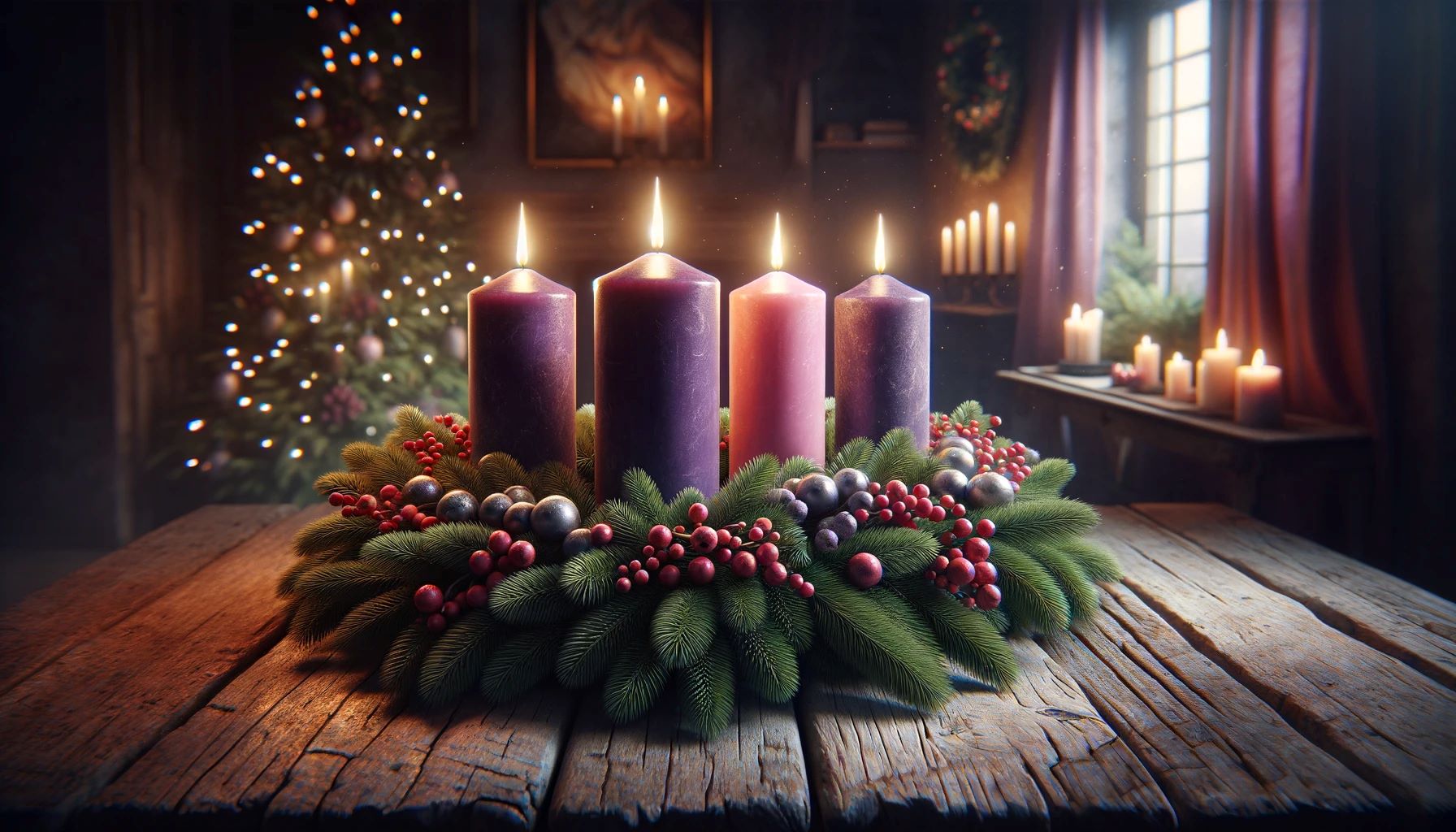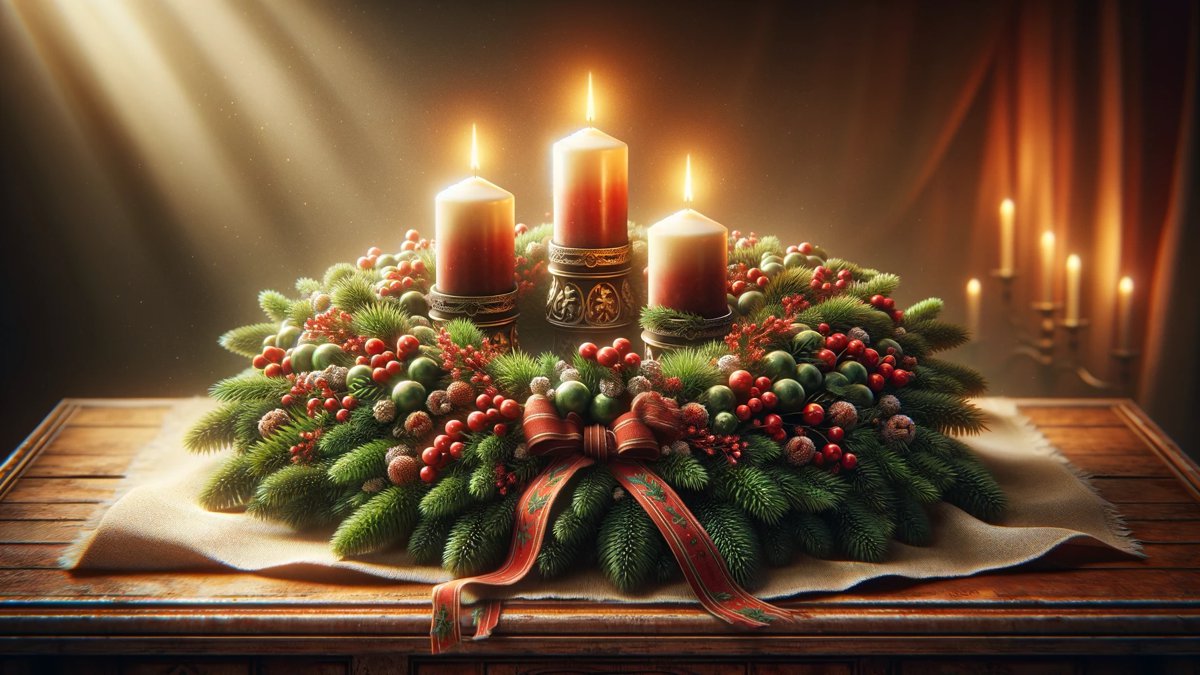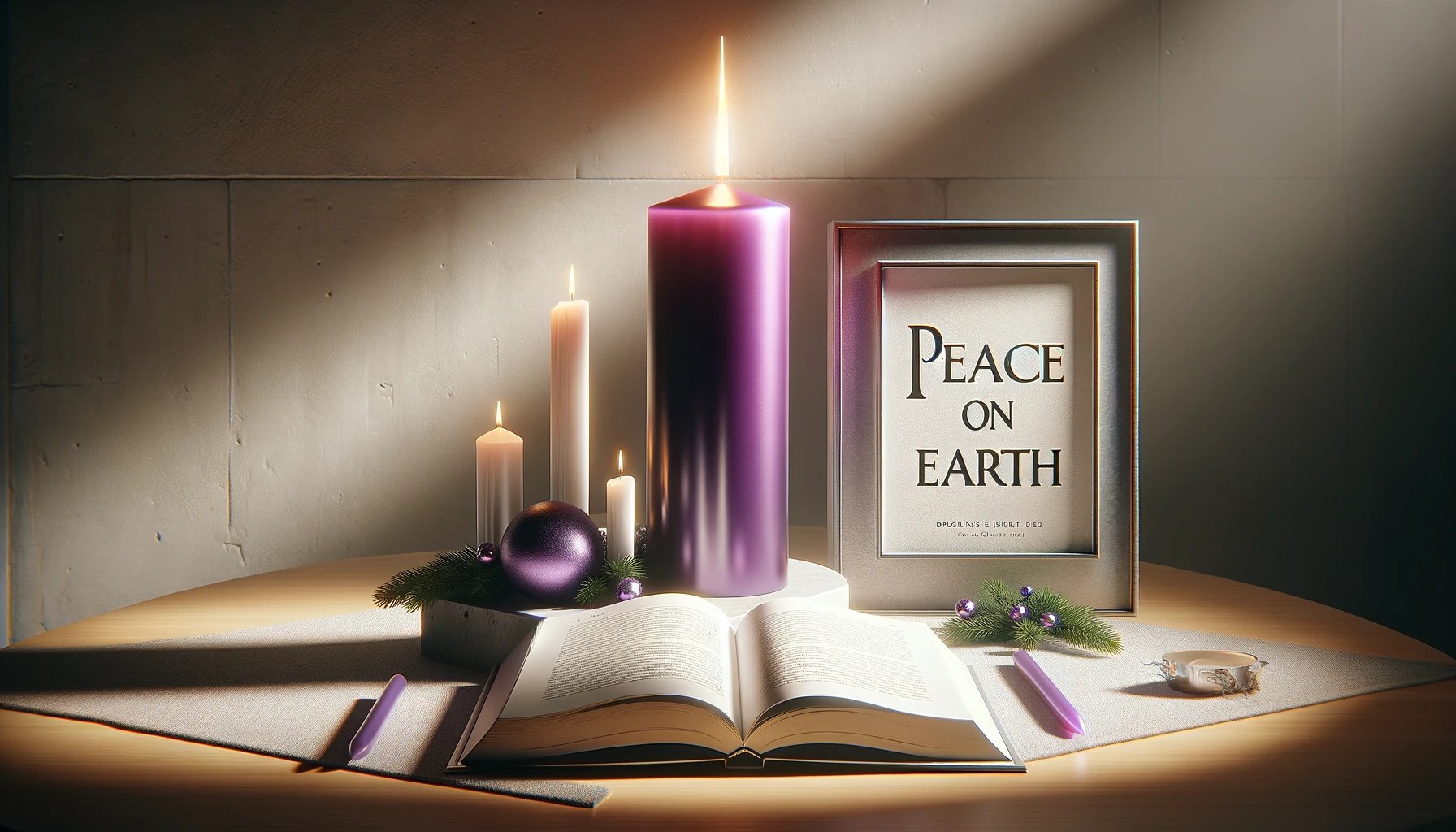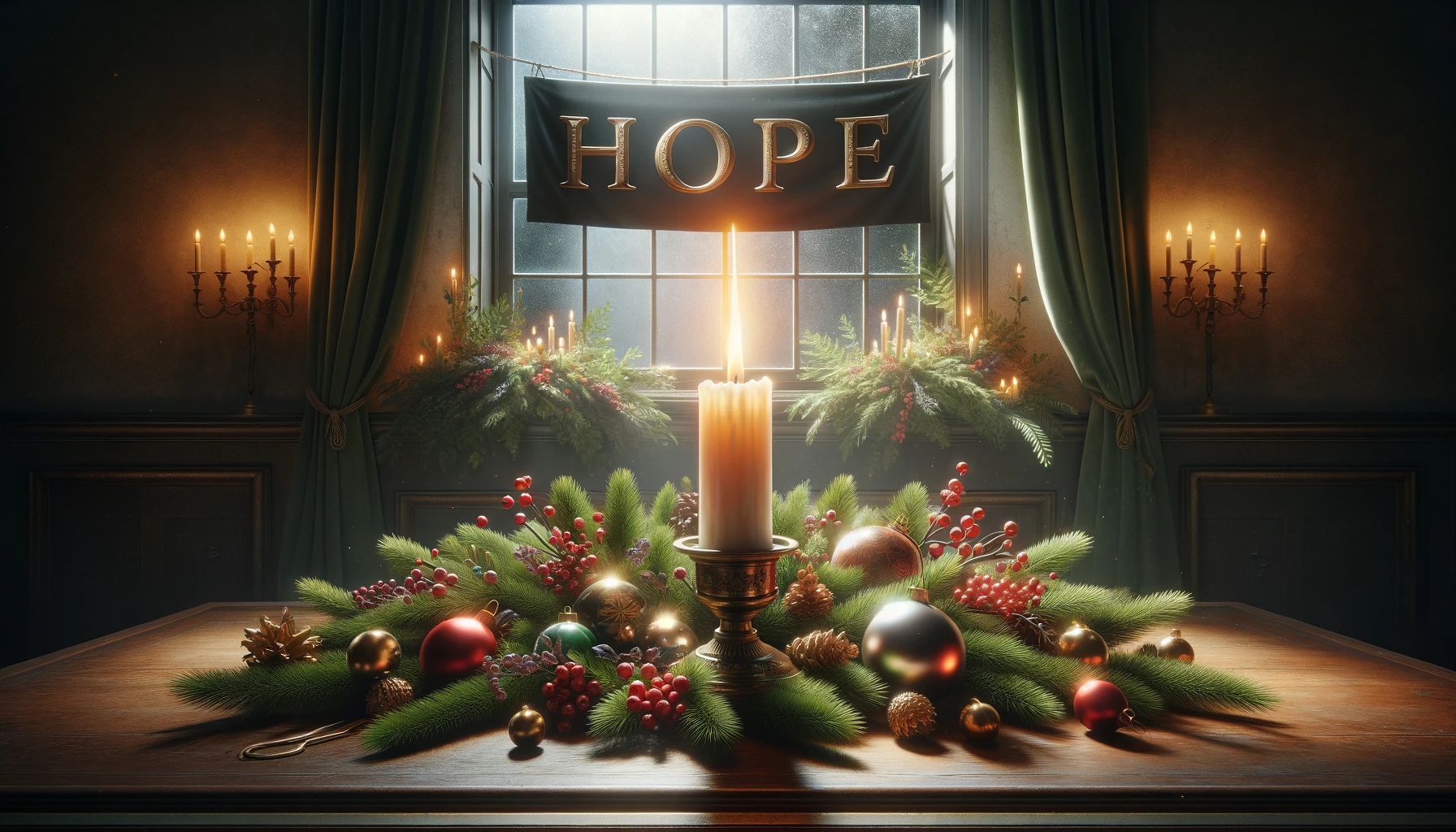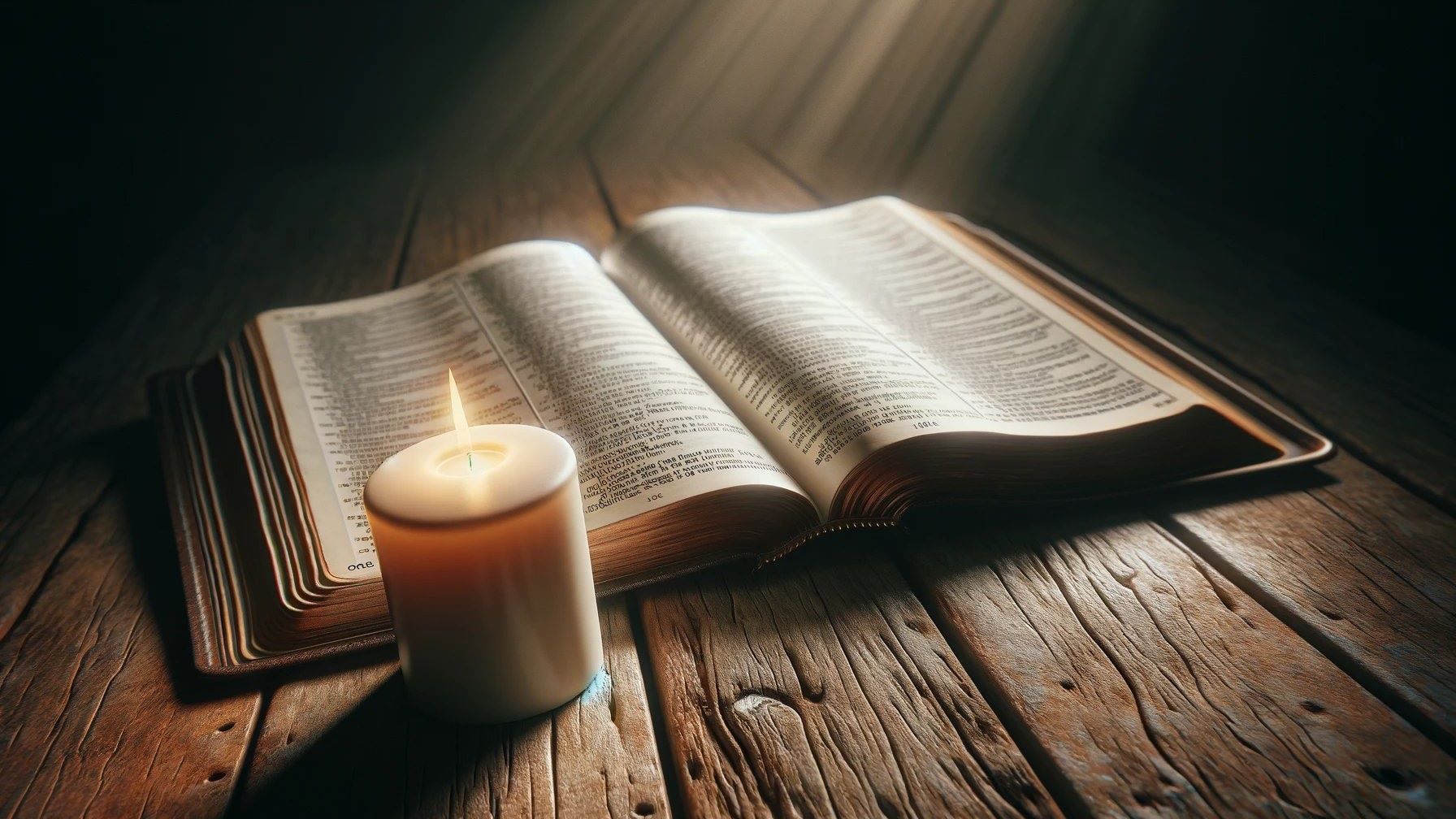Home>Special Themes>What Is The Order For The Advent Candles
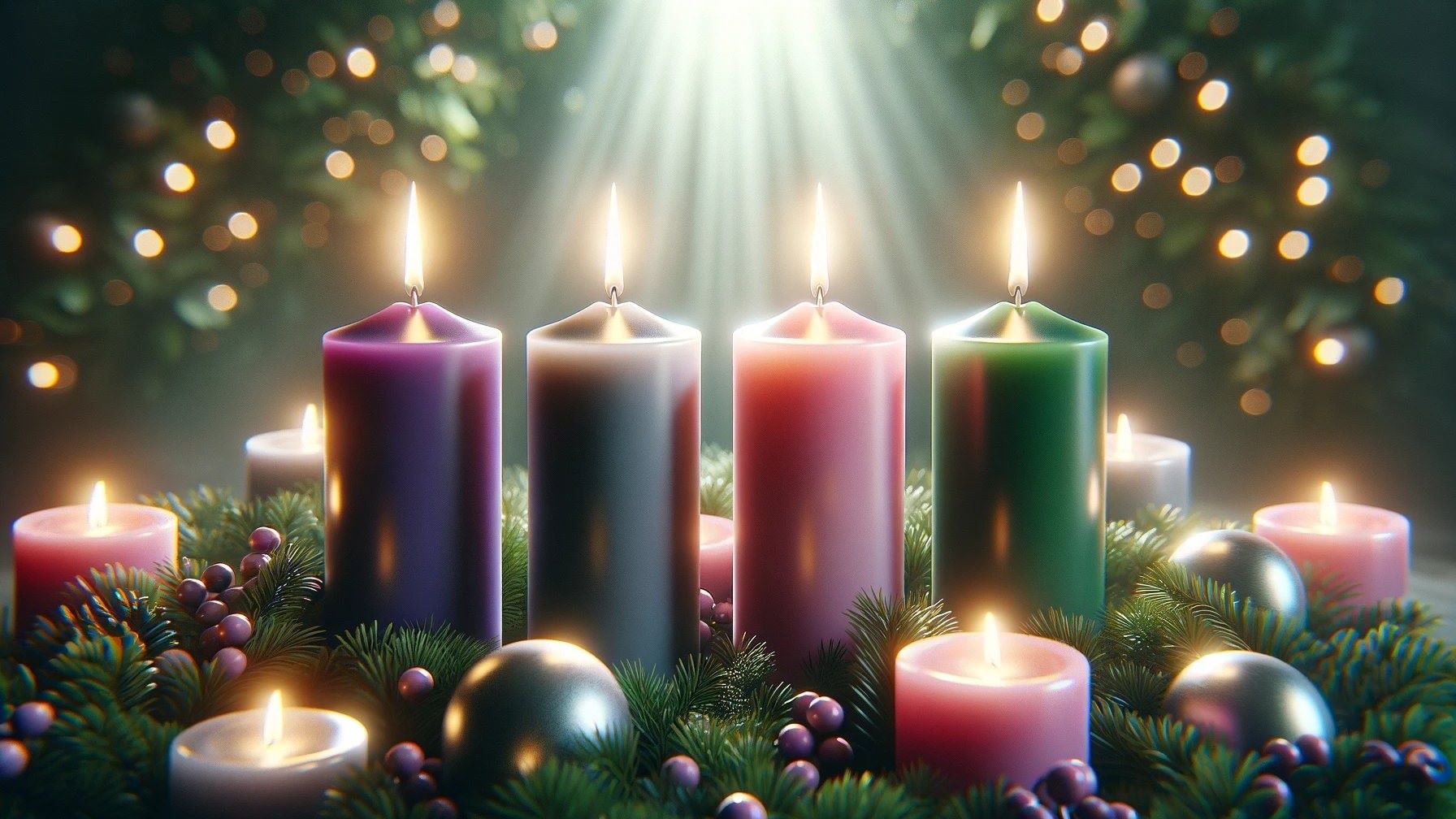

Special Themes
What Is The Order For The Advent Candles
Published: February 12, 2024
Jason DeRose, Managing Editor at Christian.net, uses his expertise in religion and journalism to deepen understanding of faith's societal impacts. His editorial leadership, coupled with a strong academic background, enriches the platform’s diverse content, earning him recognition in both journalism and religious circles.
Discover the significance and order of the Advent candles in this special themes guide. Learn about the tradition and symbolism of each candle. Explore the meaning behind the Advent wreath.
(Many of the links in this article redirect to a specific reviewed product. Your purchase of these products through affiliate links helps to generate commission for Christian.net, at no extra cost. Learn more)
Table of Contents
Introduction
Advent, a time of anticipation and preparation, is a cherished tradition observed by many Christian denominations around the world. At the heart of this spiritual journey are the symbolic Advent candles, which play a central role in the weeks leading up to Christmas. These candles, often displayed in an Advent wreath, serve as a poignant reminder of the profound significance of the season.
As we delve into the rich tapestry of Advent candles, we will uncover the historical roots of this tradition, explore the profound meanings associated with each candle, and unravel the timeless order in which they are ceremoniously lit. This exploration will provide a deeper understanding of the spiritual significance and symbolism behind the Advent candles, shedding light on their enduring relevance in contemporary celebrations.
Join us on this enlightening journey as we illuminate the path through the history, symbolism, and rituals of the Advent candles, offering a profound insight into the cherished traditions that continue to kindle the spirit of hope, peace, joy, and love during the Advent season.
Read more: In What Order Are Advent Candles Lit
History of Advent Candles
The history of Advent candles can be traced back to the early 19th century in Germany, where the tradition of lighting candles to mark the four weeks leading up to Christmas began. Initially, this practice was observed in homes, with families lighting a candle on each Sunday of Advent. Over time, this custom evolved and expanded to churches, where the Advent wreath, adorned with candles, became a focal point of the seasonal observance.
The symbolism of the Advent candles is deeply rooted in Christian tradition, with each candle representing a different aspect of the spiritual journey towards the birth of Jesus Christ. The progression of lighting a new candle each week serves as a visual representation of the increasing anticipation and illumination as Christmas draws near.
The concept of using candles to mark the passage of time during Advent is believed to have originated from the medieval Germanic custom of lighting a large candle, known as the "Rauhnacht," to signify the beginning of the Advent season. This candle was lit on the evening of December 5th and burned for the entire Advent period, symbolizing the light of Christ shining in the darkness of the world.
As the tradition of Advent candles gained popularity, the symbolism and rituals associated with the candles became more formalized. The Advent wreath, typically made of evergreen foliage to symbolize eternal life, was introduced as a visual representation of the four weeks of Advent. The wreath's circular shape also signifies God's unending love and the eternal nature of the divine.
The evolution of the Advent candles and wreath as a cherished tradition within Christian communities continued to spread throughout Europe and eventually reached other parts of the world. Today, the lighting of Advent candles remains a beloved custom in many households and congregations, serving as a poignant reminder of the spiritual significance of the Advent season.
The historical journey of the Advent candles reflects the enduring legacy of this tradition, which continues to kindle the spirit of hope and anticipation as believers prepare their hearts to celebrate the birth of Jesus Christ.
The Meaning of Each Advent Candle
The lighting of Advent candles holds profound symbolism, with each candle representing a distinct aspect of the spiritual journey towards Christmas. As the weeks of Advent unfold, the illumination of these candles serves as a poignant reminder of the timeless themes of hope, peace, joy, and love.
-
The First Candle: Hope
The first Advent candle, often referred to as the "Prophet's Candle," symbolizes hope. This candle embodies the anticipation of the Messiah's coming, echoing the hope and longing of the Old Testament prophets who foretold the birth of Jesus. As it is lit on the first Sunday of Advent, it serves as a beacon of hope, illuminating the path for believers as they embark on the journey of anticipation and spiritual preparation. -
The Second Candle: Peace
The second Advent candle represents peace and is commonly known as the "Bethlehem Candle." This candle embodies the tranquil anticipation of the Prince of Peace, whose birth was foretold in the town of Bethlehem. As it is lit on the second Sunday of Advent, it serves as a gentle reminder of the profound peace that Jesus brings to the hearts of believers, fostering a sense of serenity amidst the busyness of the season. -
The Third Candle: Joy
The third Advent candle symbolizes joy and is often referred to as the "Shepherd's Candle." This candle encapsulates the jubilant anticipation of the shepherds who received the joyous news of the Savior's birth. As it is lit on the third Sunday of Advent, it radiates the infectious joy that permeates the hearts of believers, inspiring a spirit of celebration and exultation as Christmas draws near. -
The Fourth Candle: Love
The fourth Advent candle embodies love and is commonly known as the "Angel's Candle." This candle represents the boundless love of God, manifested through the sending of His Son to redeem humanity. As it is lit on the fourth Sunday of Advent, it serves as a poignant expression of divine love, igniting a profound sense of compassion and goodwill as believers prepare to celebrate the ultimate expression of love in the birth of Jesus Christ.
The progression of lighting these candles throughout the Advent season reflects the deepening sense of anticipation and illumination as Christmas approaches. Each candle, with its unique symbolism, weaves a narrative of spiritual preparation, culminating in the joyous celebration of the birth of Jesus Christ.
The profound meanings embodied by each Advent candle serve as a timeless reminder of the enduring themes of hope, peace, joy, and love, infusing the season with profound spiritual significance and enriching the hearts of believers as they prepare to welcome the arrival of the Savior.
The Order of Lighting the Advent Candles
The ceremonial lighting of the Advent candles follows a time-honored tradition that unfolds over the four weeks leading up to Christmas. Each Sunday of Advent marks the lighting of a new candle, symbolizing the progressive illumination of the spiritual journey towards the birth of Jesus Christ. The order in which the Advent candles are lit, along with the accompanying readings and reflections, creates a poignant narrative that encapsulates the essence of the season.
On the first Sunday of Advent, the initial candle, representing hope, is ceremoniously lit. This act serves as a poignant reminder of the anticipation and longing for the Messiah's arrival, echoing the hope expressed by the prophets of the Old Testament. As the flickering flame of the first candle illuminates the darkness, it ignites a sense of hope within the hearts of believers, signaling the beginning of the Advent season.
The second Sunday of Advent heralds the lighting of the peace candle, signifying the tranquil anticipation of the Prince of Peace. As the second candle is kindled, it evokes a profound sense of serenity, reminding believers of the peace that Jesus brings to the world. The gentle glow of the peace candle serves as a beacon of hope and tranquility, fostering a spirit of calm amidst the bustling preparations for Christmas.
On the third Sunday of Advent, the joy candle is lit, infusing the season with an infectious sense of jubilation. This candle embodies the exuberant anticipation of the shepherds who received the joyous news of the Savior's birth. As its radiant flame dances in the darkness, it inspires a spirit of celebration and exultation, inviting believers to rejoice in the imminent arrival of the Messiah.
Finally, on the fourth Sunday of Advent, the love candle is ceremoniously lit, symbolizing the boundless love of God manifested through the sending of His Son. The warm glow of the love candle serves as a poignant expression of divine love, igniting a profound sense of compassion and goodwill within the hearts of believers. As the flickering flames of all four candles converge, they collectively illuminate the path to Christmas, embodying the enduring themes of hope, peace, joy, and love.
The order of lighting the Advent candles, accompanied by readings and reflections that correspond to each candle's theme, creates a poignant and transformative journey through the Advent season. This cherished tradition serves as a powerful reminder of the spiritual significance of the season, inviting believers to embrace the profound themes embodied by each candle as they prepare to celebrate the birth of Jesus Christ.
Conclusion
In conclusion, the timeless tradition of Advent candles transcends mere ritualistic observance, offering a profound journey of spiritual preparation and anticipation as believers await the celebration of the birth of Jesus Christ. The history of Advent candles, rooted in the early 19th century in Germany, reflects the enduring legacy of this tradition, which has evolved to become a cherished custom in Christian households and congregations worldwide.
The symbolism of each Advent candle, representing hope, peace, joy, and love, serves as a poignant reminder of the profound themes that underpin the Advent season. The ceremonial lighting of these candles, accompanied by readings and reflections, creates a transformative narrative that encapsulates the essence of the season, inviting believers to embrace the enduring significance of hope, peace, joy, and love as they prepare their hearts for Christmas.
As the flickering flames of the Advent candles progressively illuminate the darkness, they symbolize the increasing anticipation and illumination that culminate in the joyous celebration of the birth of Jesus Christ. Each candle, with its unique symbolism, weaves a narrative of spiritual preparation, fostering a sense of hope, tranquility, jubilation, and love within the hearts of believers.
The order of lighting the Advent candles, from hope to peace, joy, and love, mirrors the progressive journey of spiritual enlightenment and anticipation, inviting believers to immerse themselves in the timeless themes embodied by each candle. This cherished tradition serves as a powerful reminder of the spiritual significance of the season, fostering a sense of unity and reverence as believers prepare to welcome the arrival of the Savior.
In essence, the Advent candles, with their rich history, profound symbolism, and ceremonial significance, continue to kindle the spirit of hope, peace, joy, and love during the Advent season. As believers gather around the luminous glow of the Advent wreath, they are reminded of the enduring promise of the Messiah's birth and the transformative power of faith, inviting them to embrace the timeless themes that continue to enrich the hearts and souls of those who embark on this sacred journey.
The tradition of Advent candles serves as a poignant testament to the enduring legacy of faith, hope, and love, offering a timeless reminder of the profound significance of the Advent season and the joyous anticipation of the birth of Jesus Christ.
